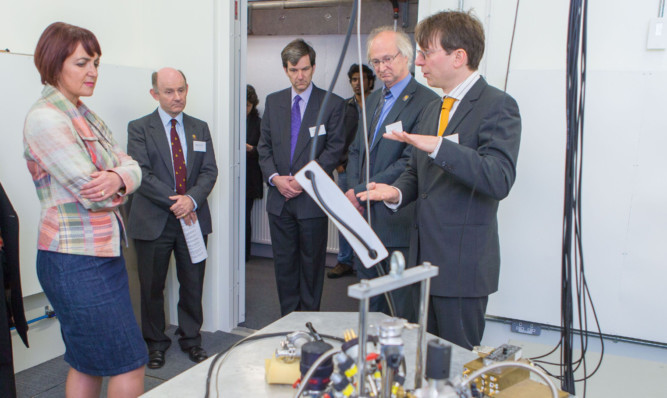A world-leading research laboratory has been unveiled at St Andrews University.
The £3.7 million physics facility, launched by education secretary Angela Constance, will put the Fife institution at the forefront of research into superconductors and light-emitting materials.
One of just a handful of its kind across the globe and the most advanced in the UK, the ultra-low vibration laboratory will allow individual atoms to be studied using custom-built microscopes.
It will allow more research into how lasers and optoelectronics can be used in areas such as solar power generation and healthcare.
Ms Constance said: “Scotland’s universities are among the world’s best and enjoy a great international reputation with four universities in the top 200 in the world, including St Andrews.
“The opening of this unique, new ultra-low vibration facility reflects the very best of academic research in Scotland and the university can be very pleased with what it has created here.
“A strong, vibrant and diverse economy is essential to our national prosperity and in creating the wealth to support high-quality public services.
“Universities and facilities such as this play a key role in providing research that could contribute hugely to our economy while also ensuring that high-quality learning opportunities are on offer.”
As well as the laboratory, a clean room and nonfabrication facility have been created, jointly paid for by the Scottish Funding Council and the university through the Scottish Universities Physics Alliance.
The laboratory will allow imaging and study of atoms in advanced materials, such as super conductors and quantum materials for next-generation technology.
The clean room will provide a clean environment for development of new electronic and phototonic materials and devices.
Professor Ifor Samuel, director of research in the university’s school of physics and astronomy, said: “2015 is the International Year of Light and we are very excited to have these new facilities to advance our research on lasers and optoelectronic materials, enabling us to explore their applications in solar power, displays, communications and healthcare.”
